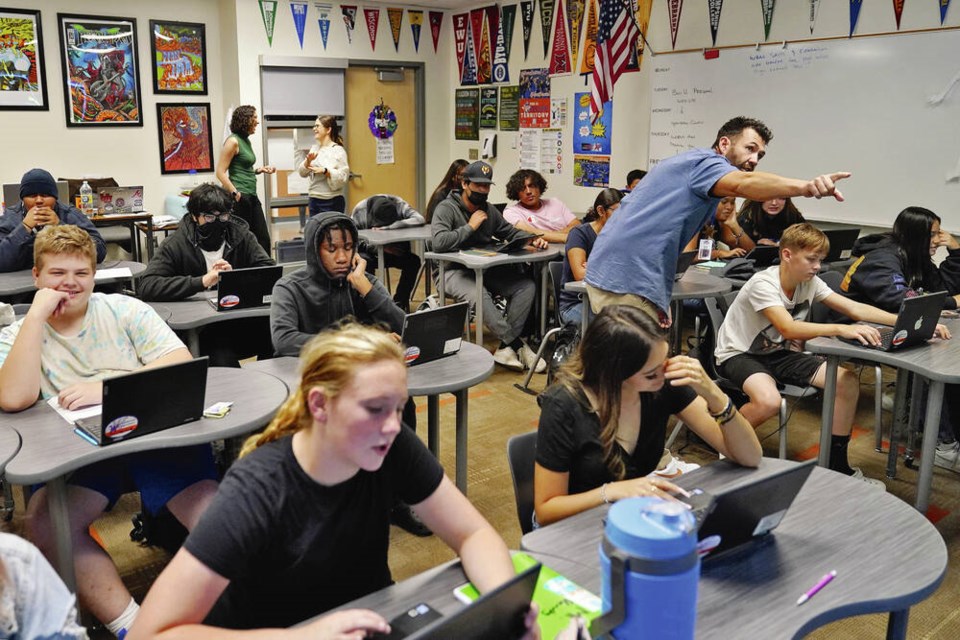Etymologically, the word “education” is derived from the Latin word 膿duc膩ti艒 (“a bringing up, a rearing”), which in turn is from 膿duc艒: “I lead forth, I take out.”
Scholars of classical Latin will correct me, but the gist of it is that the word “education” implies that thoughtfully organized questions help bring out a student’s knowledge, understanding and potential for pursuing new knowledge.
As has been said — the origin is unconfirmed — “the best teachers are those who show you where to look but don’t tell you what to see.”
Access to the world of information technology has made it possible for teachers to foster the all-important role of curiosity in learning. In this way, the best teachers are those who inspire students to want to learn and to continue to learn for the rest of their lives.
My first experience of this style of teaching, now referred to as “inquiry-based teaching,” was with my postgraduate mentor at Sydney (New South Wales) University in the 1960s.
Dr. Joyce Wylie led my seminar cohort and I would always leave those seminars marvelling at how much I actually knew, having gone into the seminars convinced I knew very little at all.
Not only that, but no matter what the topic, infused with a new curiosity, I would head over to the university’s Fisher Library newly committed to seeking more information than the seminar had produced.
Dr. Wylie would skilfully ask a cascading series of questions rather than delivering answers and, as each question led us down a path of further inquiry, the overall purpose of the seminar would be accomplished.
I saw this style of teaching again much more recently as I observed, from the back of the classroom, a Math 10 class. Sitting beside me was a UVic teacher trainee I was coaching through her first teaching practicum.
The class teacher had completed the first stage of a lesson on solving simultaneous equations by using a brief introductory demonstration and guided practice by the class.
Now it was time for students to move to independent practice.
A student sitting in front of us put up her hand and the teacher walked over. He bent down to hear her question and then straightened up and said: “You know, Annie, when you ask me a question like that, I know we are on the right track here” and walked back to his desk.
I asked my UVic trainee: “What did you see happen there?”
“He did not even answer her question,” replied the confused young teacher-in-waiting.
“No,” I said, “but he did compliment her on her thinking and basically told her that he was confident that she would continue to reason her way toward the solution and to come up with an answer that was her own. He knows that she will retain her own path to a solution long after she might have forgotten any answer the teacher would have just given her.”
Recent education reforms call for a shift in pedagogy to provide students with the skills necessary to be competitive in a global society. Inquiry-based teaching is a student-centered approach where the instructor guides the students through questions posed, methods designed, and data interpreted by the students.
It has become a cliché, but I’ll use it anyway — inquiry-based teaching and learning changes the teacher from “the sage on the stage” to “the guide on the side,” as students formulate their own questions in pursuit of further knowledge about a topic.
Through inquiry, students actively discover deeper information to support their investigations. Rather than asking students to memorize facts from the teacher, inquiry-based learning enhances the learning process by letting students explore topics themselves. As they explore a topic, students build critical thinking and communication skills.
During an inquiry-based lesson, the teacher can see how each student views a problem and the steps they develop to arrive at a solution in their own unique way.
Inquiry-based teaching and learning helps students make their own connections about what they learn. Their curiosity helps them engage and gain a deeper understanding of topics and content, instead of primarily memorizing and recalling rules, ideas or formulas.
Educators promoting an inquiry-based learning system believe it is only a matter of time in this age of easily accessible information-rich technology until inquiry skills take precedence over learning content.
As the saying goes: “Tell me and I forget, teach me and I may remember, involve me and I learn.”
Geoff Johnson is a former superintendent of schools.



